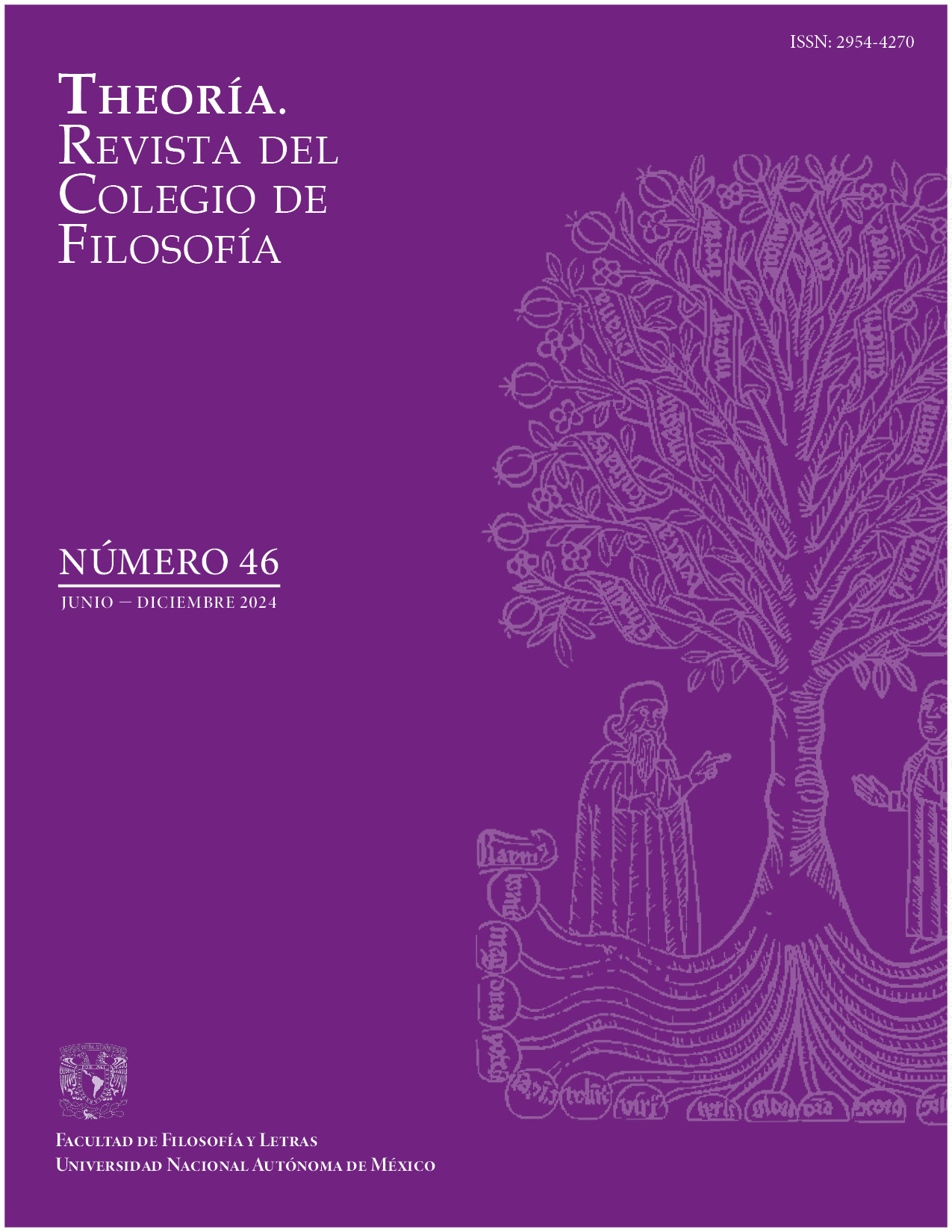On the Role of Sympathy in Aesthetic Expression: Theódore Jouffroy and Sully Prudhomme
Main Article Content
Abstract
The place of sympathy in the nineteenth-century aesthetic reflection is probably more prominent and extensive than what the histories of aesthetics have traditionally recognized. An interest in recovering theoretical arsenal that stimulates us to better understand the rich implications of this subjective and intersubjective phenomenon for art and aesthetic communication in general, in our highly aestheticized world, drives this article. It seeks to help disseminate and recognize the contributions of two thinkers of the French tradition, who are little remembered in the field of aesthetics: Théodore Jouffroy (1796-1842), who set a standard in the field of aesthetic reflection on sympathy, and Sully Prudhomme (1839-1907), who proposed a theory of expression in the arts based on sympathy. The paper explains the Théodore Jouffroy's understanding of the aesthetic as the realm of the expressive-symbolic, as well as his significant vision of the aesthetic fact, which integrates sympathy and expression in a relationship between subject and object. Likewise, it discusses the relationship between sympathy and aesthetic pleasure in the vision of this thinker. Later, Sully Prudhomme's theory on artistic expression is analyzed. The influence of Jouffroy on his work is argued; some points of contact and others in which Prudhomme distinguishes itself are determined.
Article Details

This work is licensed under a Creative Commons Attribution-NonCommercial-NoDerivatives 4.0 International License.
References
Azcárate, Patricio de. (1861). Exposición histórico-concreta de los sistemas filosóficos modernos y verdaderos principios de la ciencia. (Tomo 4). Establecimiento tipográfico de don Francisco de Paula Mellado. https://www.filosofia.org/aut/azc/sfm402.pdf
Bayer, Raymond. (1965). Historia de la estética. (Jasmin Reuter, Trad.). Fondo de Cultura Económica. (Obra originalmente publicada en 1961).
Damiron, Ph. (1863 [1843]). “Préface de l’éditeur”. En Théodore Jouffroy, Cours d’Esthétique (pp. i-xvi). Librairie de L. Hachette et Cie.
Descartes, René. (1997). Las pasiones del alma. (José Antonio Martínez y Pilar Andrade, Trads.). Editorial Tecnos, S. A. (Obra original publicada en 1649)
Eco, Umberto. (1997). Arte y belleza en la estética medieval. (Helena Lozano Miralles, Trad.). Lumen. (Obra originalmente publicada en 1987).
Ferrater Mora, José. (1965). Simpatía. Diccionario de Filosofía (Tomo ii). Editorial Sudamericana.
Foucault, Michel. (1968). Las palabras y las cosas. Una arqueología de las ciencias humanas. (Elsa Cecilia Frost, Trad.) Siglo xxi Editores. (Obra originalmente publicada en 1966).
Fraile, Guillermo. (1956). Historia de la filosofía (vol. 1). Biblioteca de autores cristianos.
Givone, Sergio. (1999). Historia de la estética. (Mar García Lozano, Trad.) Editorial Tecnos, S.A. (Obra originalmente publicada en 1988).
Herder, Johann Gottfried von. (2002). Sculpture: Some Observations on Shape and Form from Pygmalion’s Creative Dream (Trad. Jason Gaiger). The University of Chicago Press (Obra originalmente publicada en 1778).
Herder, Johann Gottfried von. (2006). “Critical Forests, or Reflections on the Art and Science of the Beautiful: First Grove, dedicated to Mr. Lessing’s Laocoön”. En Gregory Moore (Ed. y Trad.), Selected Writings on Aesthetics (pp. 51-176). Princeton University Press. (Obra originalmente publicada en 1769).
Hume, David. (1897). A Treatise of Human Nature. Oxford University Press. (Obra publicada originalmente en 1739-1740).
Hume, David. (1987). Essays. Moral, Political and Literary. Liberty Fund. (Obra publicada originalmente en 1777).
Hutcheson, Francis. (1738). An Inquiry into the Original of our Ideas of Beauty and Virtue. (Fourth edition) D. Midwinter, A. Betterswoth and C. Hitch.
Jaeger, Werner. (2004). Paideia. Los ideales de la cultura griega. (Joaquín Xirau; Wenceslao Roces, Trads.). Fondo de Cultura Económica. (Obra originalmente publicada en 1933).
Jouffroy, Théodore. (1863 [1843]). Cours d’Esthétique (deuxième édition). Librairie de L. Hachette et Cie.
Manns, James. (1988). “The Scottish Influence on French Aesthetic Thought”. Journal of the History of Ideas, 49(7), 633-651.
Manns, James W. (1991). “The Scottish Influence on French Aesthetic Thought: Later Developments”. Journal of the History of Ideas, 52(1), 103-119.
Menéndez Pelayo, Marcelino. (1889). Historia de las ideas estéticas en España: Tomo iv. Siglo xix. Vol. ii. Imprenta de A. Pérez Dubrull.
Plazaola, Juan. (2007). Introducción a la estética. Historia, teoría, textos. Universidad de Deusto.
Prudhomme, Sully. (1883). L’expression dans les beaux-arts. Application de la psychologie a l’étude de l’artiste et des beaux-arts. Alphonse Lemerre.
Saura Sánchez, Alfonso. (1991). “Elocuencia, sentimiento y sublime en D’Alembert”. Estudios románticos, 7, 227-248. https://revistas.um.es/estudiosromanicos/article/view/78641.
Schliesser, Eric. (2015). Sympathy. A history. Oxford University Press.
Shelley, Percy Bysshe. (1845 [1840]). A defence of poetry. The Bobbs-Merrill Company.
Smith, Adam. (1853 [1759]). The Theory of Moral Sentiments. Henry G. Bohn, York Street, Covent Garden.
Souriau, Étienne. (1998). Diccionario Akal de Estética. (Ismael Grasa Adé, Xavier Meilán Pita, Cecilia Mercadal y Alberto Ruiz de Smaniego, Trads.). Ediciones Akal. (Obra originalmente publicada en 1990).
Wordsworth, William. (1909-1914 [1801]). Preface to Lyrical Ballads. The Harvard Classics.

